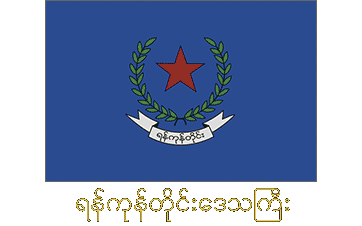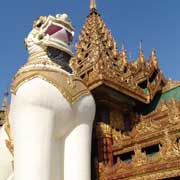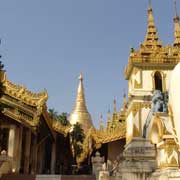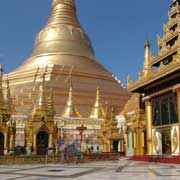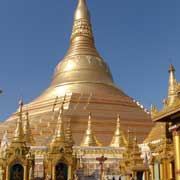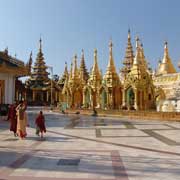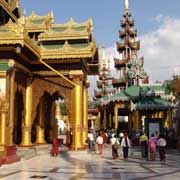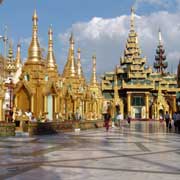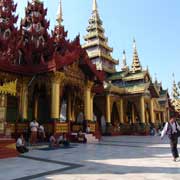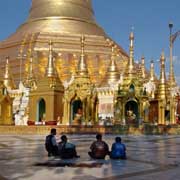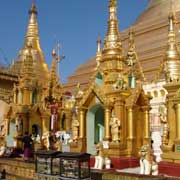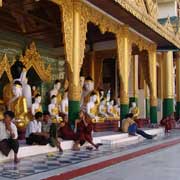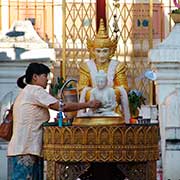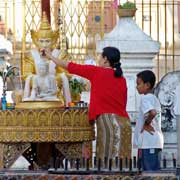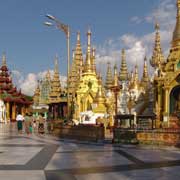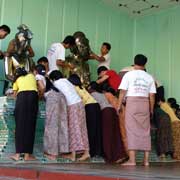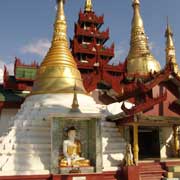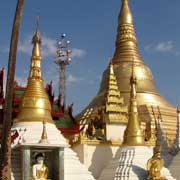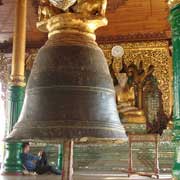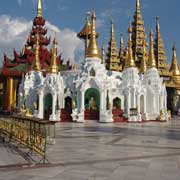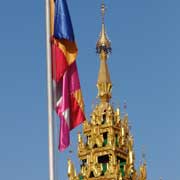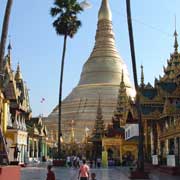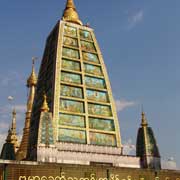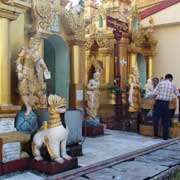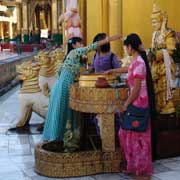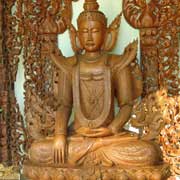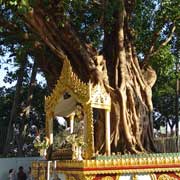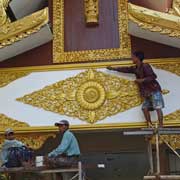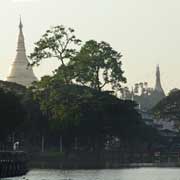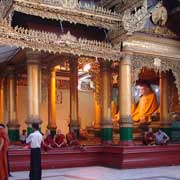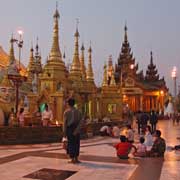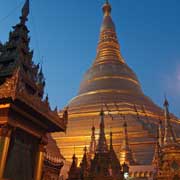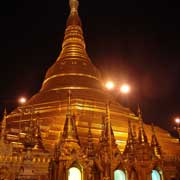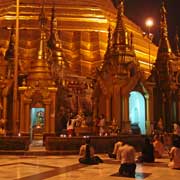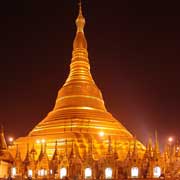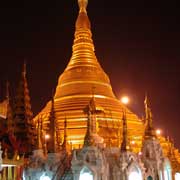Photos of Shwedagon, the Golden Pagoda, Myanmar
Shwedagon, the Golden Pagoda
An icon of Yangon and the country as a whole, the golden stupa of Shwedagon Paya dominates the skyline of the city, rising 98 metres above its base. It is Myanmar's most sacred pagoda with relics of the past four Buddhas enshrined within: the staff of Kakusandha, the water filter of Koṇāgamana, a piece of the robe of Kassapa and eight strands of hair from Siddharta Gautama, the historical Buddha.
you may then send it as a postcard if you wish.
The stupa is gilded with genuine gold plates and people all over Myanmar, including monarchs, have donated gold to maintain it. The dome is gilded every year, a tradition going back to the 15th century when Mon Queen Shinsawbu gave her weight in gold. The "hti", the crown umbrella at the top, is tipped with 5,448 diamonds and 2,317 rubies and the very top, the diamond bud, is tipped with a 76 carat diamond.
There are four entrances, each guarded by a pair of gigantic "chinthe", mythical lions, leading up a flight of steps to the platform on Singuttara Hill. The eastern stairway has adjacent monasteries and vendors who sell monastic items. Around the stupa are smaller zedi (stupas), temples, shrines, images and small pavilions, an incredible sight. People walk around the stupa in a clockwise direction. They may make offerings at shrines determined by their birthday; astrology is very important here and may also determine which ritual to perform at which shrine. The day of the week a person is born will determine their "planetary post"; there are eight in all as Wednesday is split in two, a.m. and p.m. These posts are marked by animals that represent the day and each has a small Buddha image devotees may pour water over, with a prayer and a wish. There are people strolling and performing their devotions all during the day and night.
Legend tells that Shwedagon pagoda has existed for more than 2,600 years - the world's oldest historical pagoda. Historians and archaeologists, however, claim that it was built between the 6th and 10th centuries CE by the Mon people. The stupa had fallen into disrepair until the 14th century when King Binnya U of Bago had it rebuilt to a height of 18 metres. Queen Shinsawbu, a century later, had its height raised to 40 metres. She had Singuttara Hill terraced, paved the top and assigned land and slaves, as well as giving her weight in gold. The pagoda had become Myanmar's most famous place of pilgrimage in the 16th century. An earthquake in 1768 brought down the top of the stupa but King Hsinbyushin, whose father Alaungpaya had founded the city of Yangon in 1755, had it restored and raised to its current height. British troops pillaged the compound when they occupied it on two occasions, after the Anglo-Burmese Wars in 1824 and 1852. It then remained under military control, until 1929. A new "hti", crown umbrella, was donated by King Mindon Min in 1871; in October 1970 it was put out of alignment by a moderate earthquake, but fully repaired.
